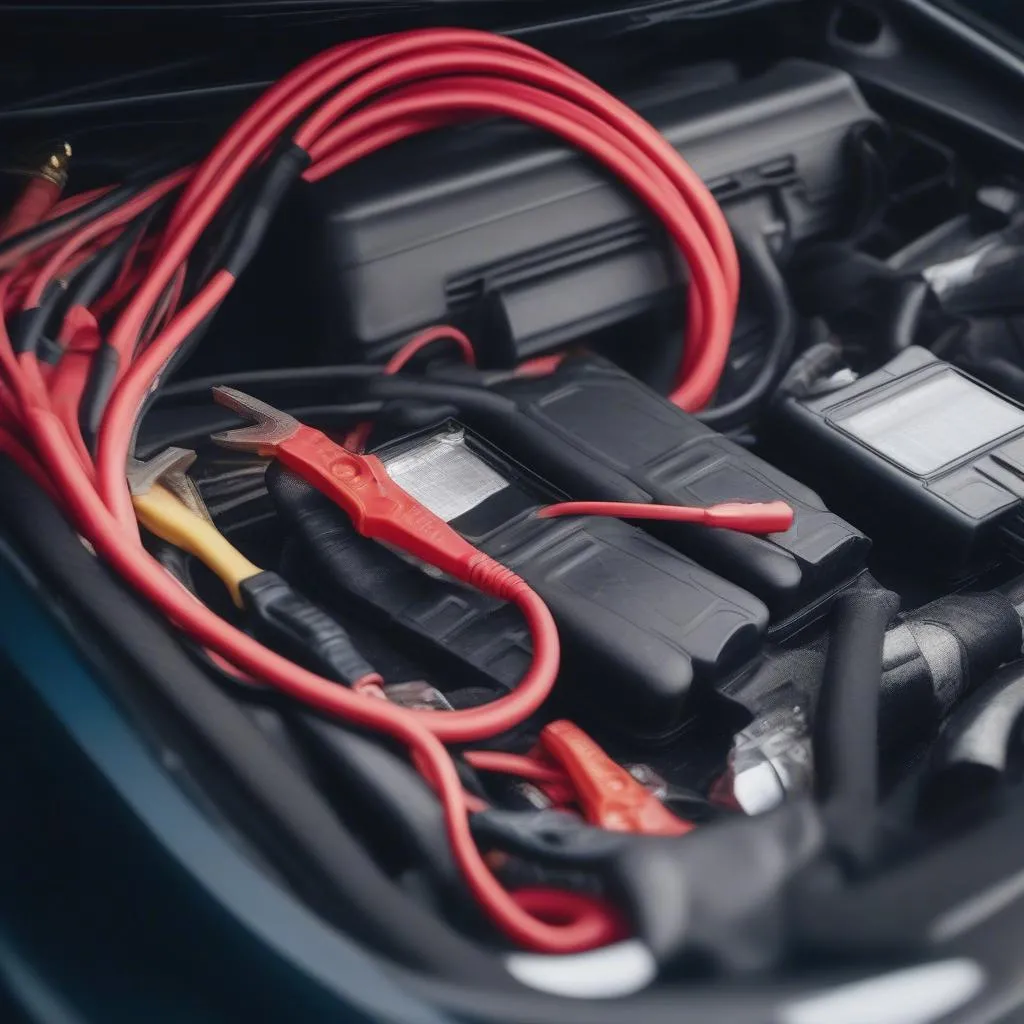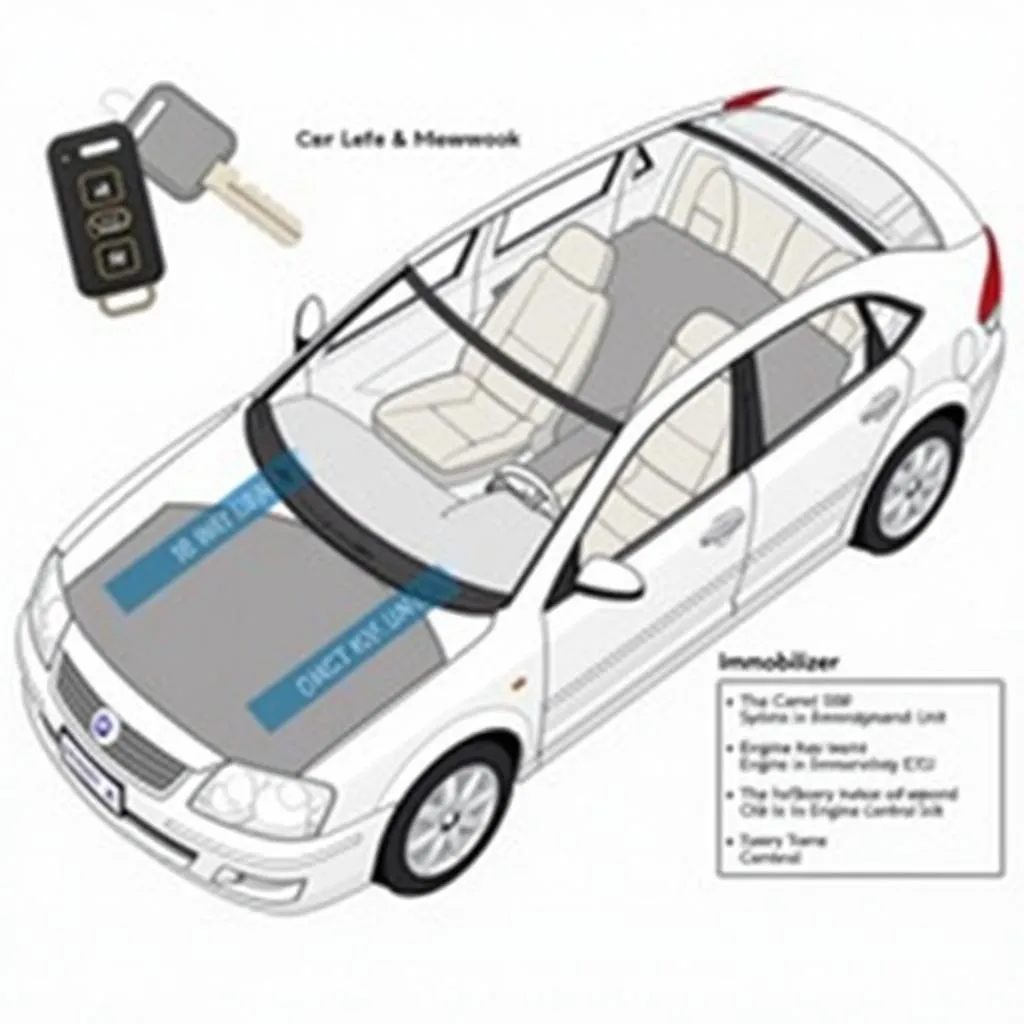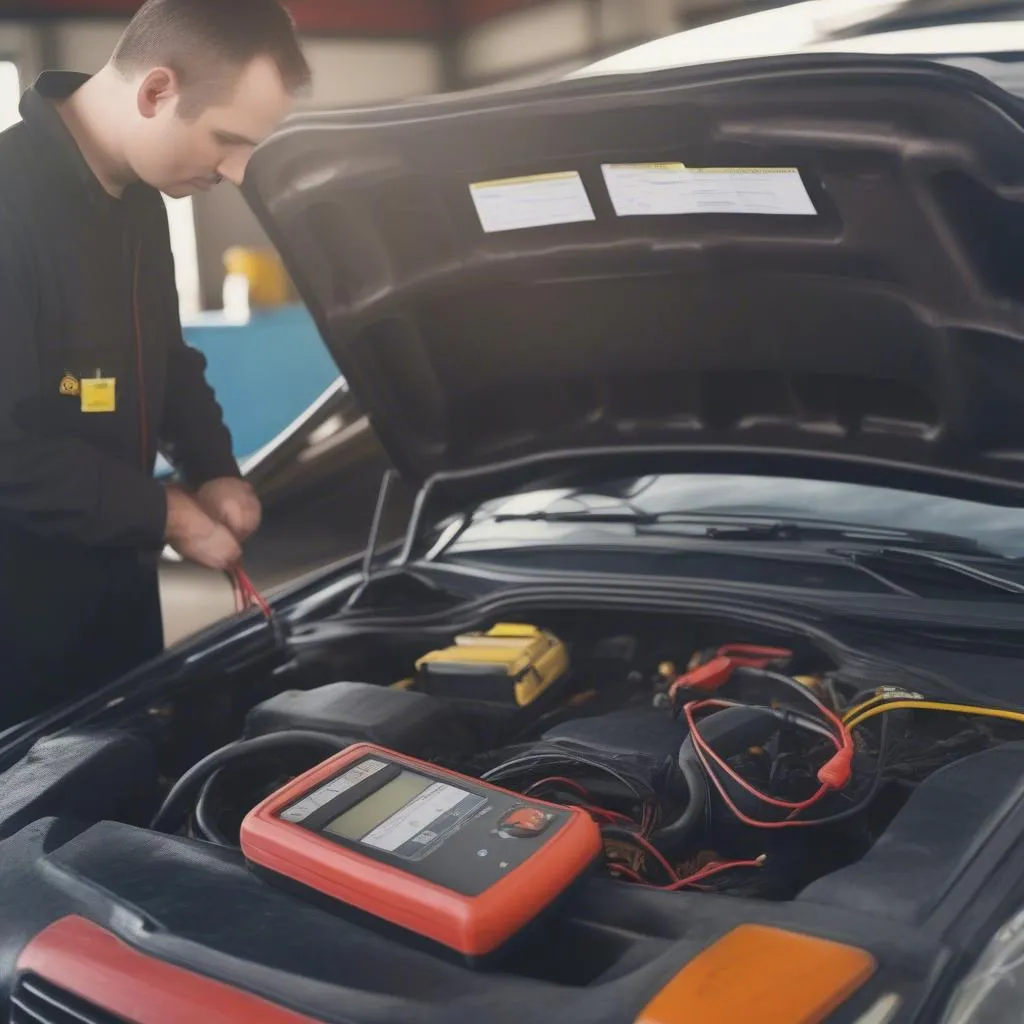Owning a 2002 Chevy Malibu can be a joy, but encountering problems with the anti-theft system can quickly turn that joy into frustration. Imagine this: you’re ready to hit the road, but your car won’t start. You turn the key, but all you hear is a click or a rapid flashing security light. This is a telltale sign that your anti-theft system might be acting up.
This comprehensive guide will walk you through the common causes, symptoms, and solutions for a malfunctioning anti-theft system in your 2002 Chevy Malibu.
Understanding Your Car’s Anti-Theft System
Before we dive into troubleshooting, it’s essential to grasp the basics of how your car’s anti-theft system works. The system primarily consists of:
- Ignition Cylinder: This component reads your key and sends a signal to the car’s computer.
- Body Control Module (BCM): This module acts as your car’s brain, receiving signals from various sensors, including the ignition cylinder.
- Passlock Sensor: Located on the ignition lock cylinder, this sensor verifies the key and communicates with the BCM to allow or prevent the engine from starting.
When you insert your key and turn it, the Passlock sensor reads the resistor pellet embedded in the key. If the signal matches what the BCM expects, it allows the fuel and ignition systems to engage, starting your car. However, if there’s a mismatch or a fault in the system, the anti-theft system will kick in, preventing the engine from starting.
Common Causes of Anti-Theft System Problems
Several culprits could be causing your 2002 Chevy Malibu’s anti-theft system to misbehave. Here are some of the most prevalent reasons:
- Faulty Ignition Cylinder: A worn-out or malfunctioning ignition cylinder might not read the key’s resistor pellet correctly, causing a communication error with the BCM.
- Damaged or Worn Key: Over time, your car key’s resistor pellet can wear out or get damaged, leading to an improper signal being sent to the Passlock sensor.
- Weak Car Battery: A weak or dying car battery can disrupt the electrical signals within the anti-theft system, causing it to malfunction.
- Malfunctioning BCM: Although less common, a faulty BCM can disrupt the entire anti-theft system’s operation.
How to Identify Anti-Theft System Issues
Now that you know the potential causes let’s look at the symptoms of a faulty anti-theft system:
- Engine Cranks but Won’t Start: This is one of the most common signs. Your engine might crank when you turn the key, but it won’t fire up.
- Security Light Flashing: The “Security” light on your dashboard might flash rapidly or stay illuminated, indicating a problem with the anti-theft system.
- Clicking Sounds: You might hear clicking noises coming from the starter or other components when trying to start your car.
Tools You’ll Need for Troubleshooting
If you suspect your anti-theft system is causing trouble, here are some essential tools to gather:
- Jumper Cables: To rule out a weak battery.
- OBD-II Scanner: This handy tool allows you to read diagnostic trouble codes stored in your car’s computer, providing valuable insights into the problem.
- Basic Hand Tools: A set of screwdrivers and wrenches can be helpful if you need to access the ignition cylinder or other components.
 Car Battery Jumpstart
Car Battery Jumpstart
Troubleshooting Steps
Remember, it’s always recommended to consult a qualified mechanic or automotive locksmith for complex electrical issues. However, here are some initial steps you can take:
-
Check Your Battery: Begin by ensuring your car battery is fully charged. A weak battery can cause all sorts of electrical gremlins, including anti-theft system problems. Use your jumper cables to jumpstart your car from another vehicle or a portable jump starter.
-
Inspect Your Key: Carefully examine your car key for any visible damage, especially the resistor pellet. If it looks worn out or damaged, you might need a replacement key programmed to your car’s specific anti-theft system.
-
Perform the 30-Minute Relearn Procedure: This procedure can sometimes reset the anti-theft system and resolve minor glitches.
- Step 1: Turn the ignition to the “On” position without starting the engine.
- Step 2: Attempt to start the engine. It will not start.
- Step 3: Leave the ignition in the “On” position for 10 minutes. You’ll likely notice the security light turns off after a few seconds – that’s normal.
- Step 4: After 10 minutes, turn the ignition to the “Off” position for 5 seconds.
- Step 5: Repeat steps 1-4 two more times (for a total of three 10-minute cycles).
- Step 6: On the third attempt, try starting your car. If the relearn procedure is successful, your car should start.
-
Scan for Trouble Codes: If the relearn procedure doesn’t do the trick, it’s time to use your OBD-II scanner to read any stored diagnostic trouble codes. Connect the scanner to your car’s OBD-II port, typically located under the dashboard on the driver’s side.
-
Consult a Professional: If your efforts don’t yield a solution or you encounter persistent problems with the anti-theft system, seeking help from a qualified mechanic or automotive locksmith specializing in automotive electronics is highly recommended. They have the expertise and specialized tools to diagnose and repair complex electrical issues.
 OBD2 Scanner
OBD2 Scanner
Frequently Asked Questions About Chevy Malibu Anti-Theft Systems
Q1: Can I bypass the anti-theft system on my 2002 Chevy Malibu?
A: While it’s technically possible to bypass the anti-theft system, we strongly advise against it. Bypassing the system compromises your car’s security and could lead to legal issues. It’s crucial to address the root cause of the problem rather than resorting to workarounds that jeopardize your vehicle’s safety and your peace of mind.
Q2: I need a new key. Can any locksmith make one?
A: Not all locksmiths have the equipment and expertise to program keys for vehicles with anti-theft systems. Look for an automotive locksmith or contact your dealership, as they can cut and program a new key that works seamlessly with your car’s anti-theft system.
Q3: How much does it cost to fix a Chevy Malibu anti-theft system problem?
A: The cost of repair can vary significantly depending on the underlying cause. A simple fix like a new key might cost less than $100, while a faulty ignition cylinder or BCM could set you back several hundred dollars. Consulting a qualified mechanic for a proper diagnosis is crucial to get an accurate estimate.
Q4: Can aftermarket car alarms interfere with the factory anti-theft system?
A: Yes, sometimes, aftermarket car alarms, especially if not installed correctly, can interfere with the factory anti-theft system, leading to conflicts and malfunctions. If you’ve recently had an aftermarket alarm installed and are experiencing anti-theft issues, it’s worth consulting a qualified installer or mechanic to ensure compatibility and proper installation.
Q5: What are some recommended diagnostic tools for troubleshooting car electrical problems, particularly anti-theft systems?
A: Cardiagtech offers a range of professional-grade diagnostic tools designed for automotive troubleshooting, including those related to anti-theft systems. These tools can help you pinpoint the root cause of electrical issues efficiently. You can explore their offerings here.
Conclusion
Dealing with a faulty anti-theft system in your 2002 Chevy Malibu can be a frustrating experience. By understanding the common causes, recognizing the symptoms, and following the troubleshooting steps outlined in this guide, you’ll be well-equipped to address the issue effectively. If the problem persists, don’t hesitate to seek help from a qualified mechanic or an automotive locksmith specializing in car electronics.
Need expert assistance with your car’s electronics or diagnostics? Contact CARDIAGTECH today! We offer top-notch solutions and support for all your automotive needs.


